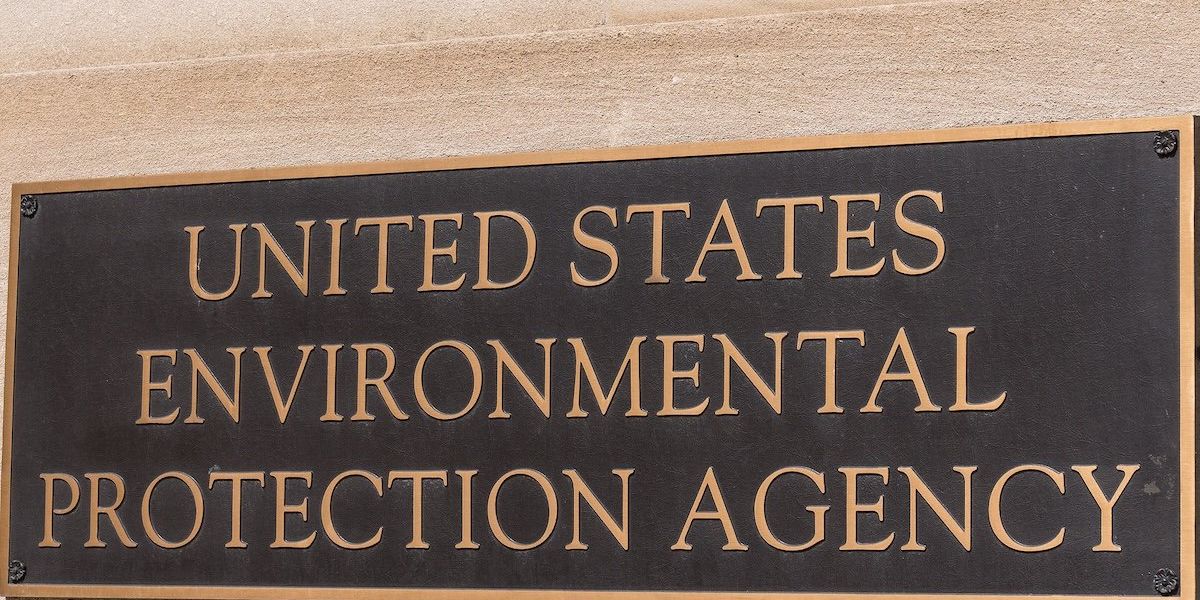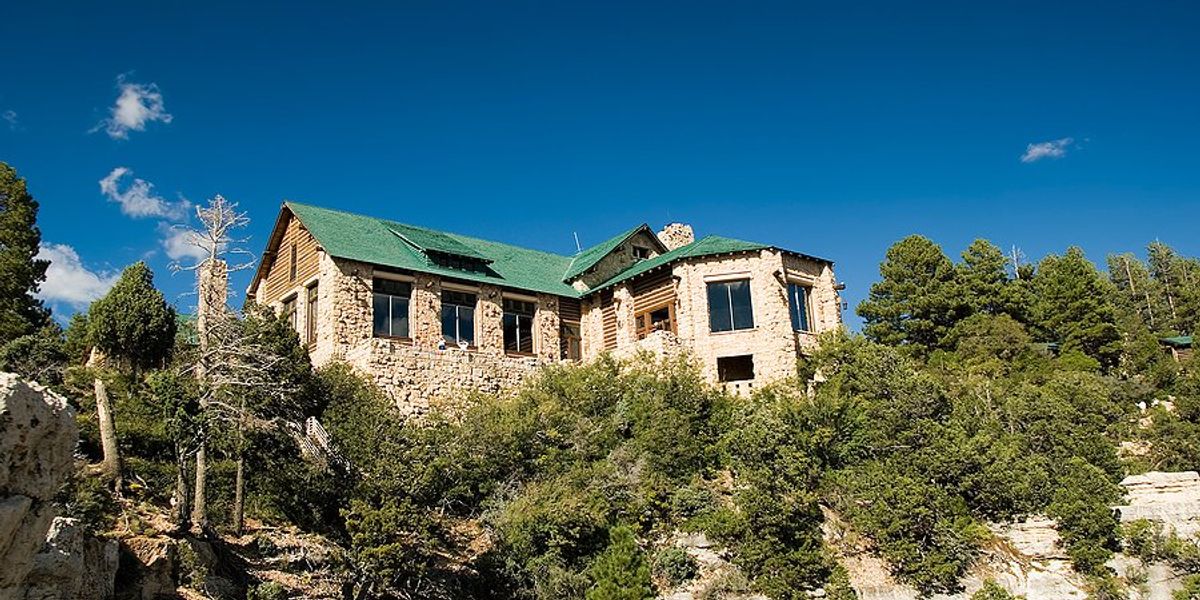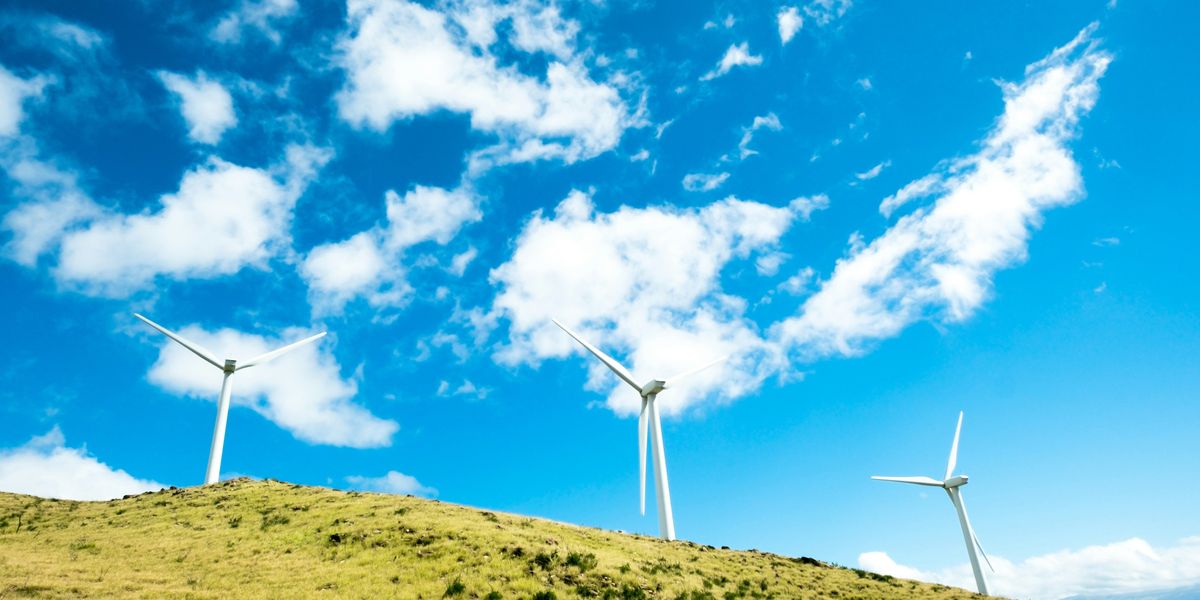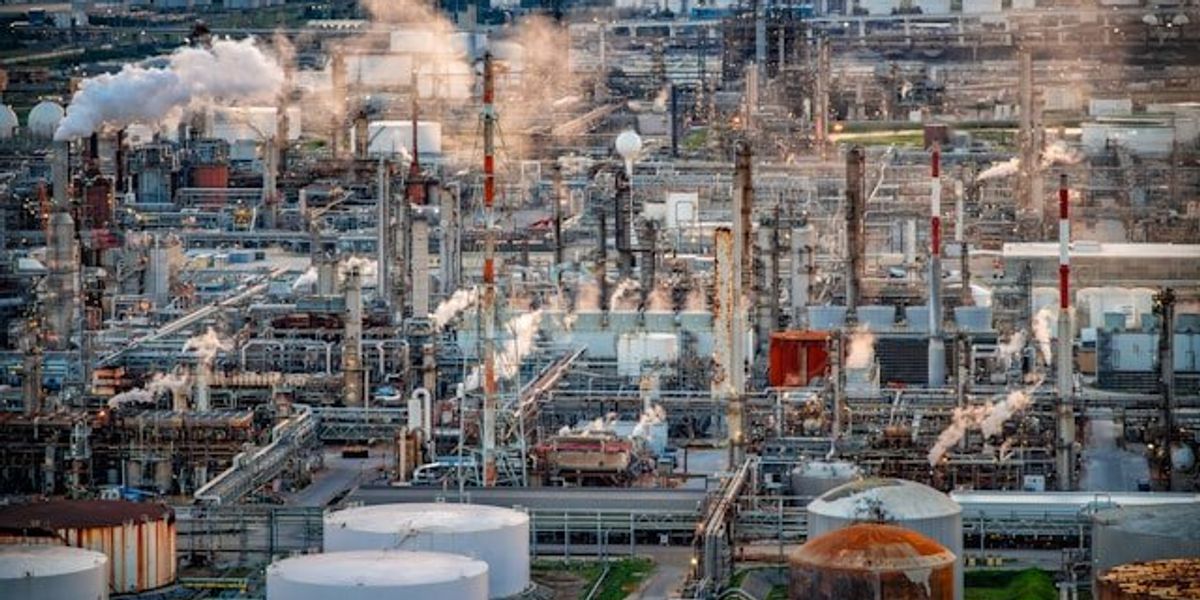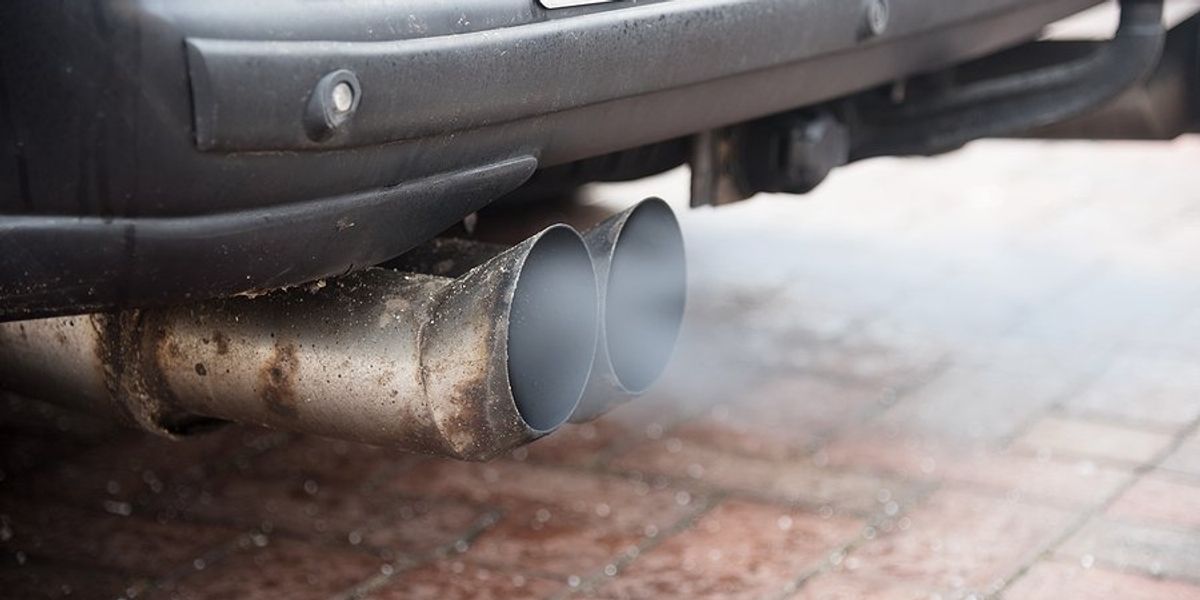learning_disabilities
Pregnancy becomes a more vulnerable time with climate change
Australia emits mercury at double the global average.
A report released this week by advocacy group Environmental Justice Australia presents a confronting analysis of toxic emissions from Australia’s coal-fired power plants.
A report released this week by advocacy group Environmental Justice Australia presents a confronting analysis of toxic emissions from Australia’s coal-fired power plants.
The report, which investigated pollutants including fine particles, nitrogen oxides and sulfur dioxide, also highlights our deeply inadequate mercury emissions regulations. In New South Wales the mercury emissions limit is 666 times the US limits, and in Victoria there is no specific mercury limit at all.
This is particularly timely, given that yesterday the Minamata Convention, a United Nations treaty limiting the production and use of mercury, entered into force. Coal-fired power stations and some metal manufacturing are major sources of mercury in our atmosphere, and Australia’s per capita mercury emissions are roughly double the global average.
In fact, Australia is the world’s sixteenth-largest emitter of mercury, and while our government has signed the Minamata convention it has yet to ratify it. According to a 2016 draft impact statement from the Department of Environment and Energy:
Australia’s mercury pollution occurs despite existing regulatory controls, partly because State and Territory laws limit the concentration of mercury in emissions to air […] but there are few incentives to reduce the absolute level of current emissions and releases over time.
Mercury can also enter the atmosphere when biomass is burned (either naturally or by people), but electricity generation and non-ferrous (without iron) metal manufacturing are the major sources of mercury to air in Australia. Electricity generation accounted for 2.8 tonnes of the roughly 18 tonnes emitted in 2015-16.
Mercury in the food web
Mercury is a global pollutant: no matter where it’s emitted, it spreads easily around the world through the atmosphere. In its vaporised form, mercury is largely inert, although inhaling large quantities carries serious health risks. But the health problems really start when mercury enters the food web.
I’ve been involved in research that investigates how mercury moves from the air into the food web of the Southern Ocean. The key is Antartica’s sea ice. Sea salt contains bromine, which builds up on the ice over winter. In spring, when the sun returns, large amounts of bromine is released to the atmosphere and causes dramatically named “bromine explosion events”.
Essentially, very reactive bromine oxide is formed, which then reacts with the elemental mercury in the air. The mercury is then deposited onto the sea ice and ocean, where microbes interact with it, returning some to the atmosphere and methylating the rest.
Once mercury is methylated it can bioaccumulate, and moves up the food chain to apex predators such as tuna – and thence to humans.
As noted by the Australian government in its final impact statement for the Minamata Convention:
Mercury can cause a range of adverse health impacts which include; cognitive impairment (mild mental retardation), permanent damage to the central nervous system, kidney and heart disease, infertility, and respiratory, digestive and immune problems. It is strongly advised that pregnant women, infants, and children in particular avoid exposure.
Australia must do better
A major 2009 study estimated that reducing global mercury emissions would carry an economic benefit of between US$1.8 billion and US$2.22 billion (in 2005 dollars). Since then, the US, the European Union and China have begun using the best available technology to reduce their mercury emissions, but Australia remains far behind.
But it doesn’t have to be. Methods like sulfur scrubbing, which remove fine particles and sulfur dioxide, also can capture mercury. Simply limiting sulfur pollutants of our power stations can dramatically reduce mercury levels.
Ratifying the Minamata Convention will mean the federal government must create a plan to reduce our mercury emissions, with significant health and economic benefits. And because mercury travels around the world, action from Australia wouldn’t just help our region: it would be for the global good.
How is pollution connected to race and inequality?
The Trump administration has proposed cutting the EPA's budget by 30 percent. What does that mean for polluted communities in the U.S.?
How is pollution connected to race and inequality? | terrestrial
By ASHLEY AHEARN & ASHLEY CLEEK • 4 HOURS AGO
TweetShareGoogle+Email
Day becomes night when industrial smog is heavy in North Birmingham, Alabama, as on this day in July of 1972. Sitting adjacent to the U.S. Pipe plant, this is the most heavily polluted area of the city.
LEROY WOODSON FOR THE EPA VIA NARA HTTPS://CATALOG.ARCHIVES.GOV/ID/545397
The Trump administration has proposed cutting the EPA's budget by 30 percent. What does that mean for polluted communities in the U.S.?
Listen Listening...21:02
The effects of pollution and climate change don’t affect us all equally. Those hit hardest often belong to communities of color and are cash poor — what Majora Carter describes as “low status” communities. She’s an urban revitalization strategist who has focused on environmental justice throughout her career. Carter was raised in the South Bronx, a hub of urban blight.
She grew up, went to college and returned to New York for grad school — right as the government was about to turn part of her community into a dumping ground.
This the final episode of the first season of Ashley Ahearn's new podcast, terrestrial: exploring the choices we make in a world we have changed. You can join our Facebook group and subscribe to the podcast to hear all our full episodes.
“Even though the Bronx handled about 40 percent of the city's commercial waste and 100 percent of its own waste, we were about to handle possibly another 40 percent of the city's commercial waste,” she recalled. “It was just like, ‘Are you crazy?’”
She decided to stay and resist.
“I looked at that and thought, wow, this is happening because we happen to be a low income community of color,” she said.
The community came together — and got the city to build a park instead of the waste facility.
But, Carter said, this is happening all over this country, and we as a society aren’t talking about it enough.
“We do need to have white people saying this is a problem because it's true,” she said. “I'm often the angry black woman, but all I'm literally saying is, like, this doesn't happen in white neighborhoods.”
In this episode of terrestrial, we’re going to hear a story from Birmingham, Alabama, where another community has struggled with pollution for almost a century.
An image from the Documentera project from the Environmental Protection Agency. The caption reads: Smoke from industrial plants is a fact of life in Birmingham, Alabama, 1972.
CREDIT LEROY WOODSON FOR EPA VIA HTTPS://CATALOG.ARCHIVES.GOV/ID/545404
North Birmingham today.
CREDIT ASHLEY CLEEK FOR KUOW
Birmingham is an old steel manufacturing town, and it’s been struggling with environmental issues for a while. The neighborhoods in North Birmingham are industrial — steel foundries, cement plants, scrap yards – and they’re also majority African-American.
Charlie Powell grew up in this neighborhood and he took reporter Ashley Cleek for a ride through the area.
He pointed out piles of waste owned by the coal company. They’re called “wire fluff piles,” which is the product of wires being stripped of their conductive metal and ground into dust.
Beneath these piles, the Environmental Protection Agency said they’ve found high levels of lead, but they haven’t been able to move it. That’s because it’s on private land owned by the coal company.
Birmingham has a long history of institutionalized racism with racial zoning laws in effect until 1951. That meant black families could only live in certain neighborhoods.
The wire fluff pile in North Birmingham.
CREDIT ASHLEY CLEEK FOR KUOW
During the '70s and '80s, and even the '90s, the pollution was really intense in these neighborhoods. Powell remembers when he was 30 or so, driving home late: “At night, from 12 to about 2 o’clock in the morning, you could be coming down the road in the good summertime, when it’s 70 to 80 degrees at night, you could just see it, like it’s just, the whole night is kind of lit up like white.”
The smog, Powell said, felt like a light snow falling or like someone had blown on a billion dandelions. When it got on your clothes, you’d itch all over.
Industrial smog blacks out homes near the North Birmingham Pipe Plant, 1972.
CREDIT LEROY WOODSON FOR EPA VIA NATIONAL ARCHIVES
Powell didn’t realize how bad things were until he got a job driving a delivery truck around Birmingham, and he noticed that other neighborhoods weren’t like his. “I saw the houses and I wanted one,” he said.
It was the smell he wanted most. Wealthier neighborhoods in other parts of town didn’t smell like his. “It don't smell like rotten eggs and cabbages,” Powell said.
A lot of people here have been trying to get the government to do something about the pollution for decades. There was a city councilwoman named Maxine Parker who went to Washington, D.C., every year to talk to her congressmen about the pollution. But she died of cancer in 2013.
And Rev. E. O. Jackson who grew up down the street across from the coal plant — he moved away but returns to see his old neighbors.
“Other than going over there for meetings,” he said, “I’m over there for funerals. Cancer, cancer, cancer, cancer.”
Jackson’s mother died of cancer at 59, almost the same age he is now. He said it seems like a lot of neighborhood kids have asthma and learning disabilities – he believes it's connected to the pollution.
“All of us are sitting back, pondering and wondering, why do we have these high numbers of people who are passing away from cancer? Wait a minute, have these chemicals played a role?”
Local officials kept telling residents that everything was fine until 2011, when the EPA announced that they found toxic levels of arsenic and benzopyrene — both known carcinogens — in the dirt at a neighborhood school. So then the federal government came in to do more testing.
Majora Carter and Ashley Ahearn in an interview booth at KUOW Public Radio in Seattle.
CREDIT KUOW PHOTO/BRENDAN SWEENEY
“All of a sudden, boom, we have an office, it's staffed,” Jackson said. “You just don't get these people coming, there had to be something there.”
The EPA declares these neighborhoods a Superfund site, which means the community can get federal funds to clean up the pollution, and the EPA can make industry pay for it.
Residents are told not to eat the vegetables in their gardens. Parents are told their kids should wash their hands and kick the dirt off their shoes before coming inside.
People in the neighborhood were horrified, and also relieved that the EPA had showed up.
But when the soil tests started coming back the results were not what residents expected to see.
To hear the full episode subscribe to the terrestrial podcast here.
Postscript:
This is the final episode of terrestrial’s first season. We’ll be back in the fall with a new season for you, but in the meantime, we want to celebrate! So if you’re in Seattle on Wednesday, July 26, come to Fremont Brewing’s Urban Beer Garden from 5-9 p.m. Find more info about the event and a special offer for terrestrial subscribers.
TAGS:
Wrecking the EPA is toxic for Black communities.
When decisions are made about where polluting industries should be placed, our communities too often end up in the cross hairs.
Wrecking the EPA is toxic for Black communities
By Keith Rushing May 14, 2017 0
The Trump administration has made clear that it plans to limit environmental protections and reverse course on the stronger regulations achieved under President Barack Obama out of concern for the bottom lines of Corporate America.
Mainstream media has covered Trump’s decision to prioritize private profits over public health and the well-being of our environment. But media attention hasn’t focused on the impacts to African Americans across the U.S. who face a greater environmental burden than white Americans.
Unfortunately, Blacks are more likely to live in neighborhoods with higher levels of pollution because of the proximity of our neighborhoods to landfills, highways, refineries or coal-fired power plants.
A University of Minnesota study showed that nitrogen dioxide, a pollutant produced by cars and heavy industry and linked to asthma and heart disease, is more prevalent even in well-off communities of color than in white communities with similar income levels.
Furthermore, the majority of the 9 million people living near hazardous waste sites are people of color.
Trump’s EPA, under the direction of EPA Administrator Scott Pruitt, decided last month to reverse course on nearly two dozen environmental rules. And with some of them the correlation to public health in Black communities is abundantly clear.
Last month, Pruitt was granted a delay in defending the ozone or smog standard from lawsuits by polluter and conservative states that sought to keep the strongest-ever ozone standard from being implemented. Ozone, a deadly pollutant emitted by cars, trucks and factories, causes asthma attacks. The 2015 standard, established under Obama, was attacked immediately through federal lawsuits by polluters and conservative states, which argued that it was unnecessary, even though the EPA’s scientific research showed that hundreds of lives would be saved by the tougher measures.
One in 6 Black children has asthma, the highest prevalence of any racial group. African Americans are also three times as likely as whites to end up in the emergency room or die from asthma.
So the impact of failing to protect the nation from ozone pollution is quite clear for our communities.
The Trump administration also asked the federal court to delay its defense of the first-ever mercury and air toxic standard which limits pollution, like lead and mercury, from coal-fired power plants. Like the ozone standard, the 2012 mercury and air toxic standard, was attacked by industry through litigation.
This pollution from coal-fired plants is no laughing matter. It is linked to heart disease, asthma and developmental and learning disabilities among babies and children. And this is particularly important for African Americans. For example, an NAACP study found that the majority of the 6 million people living near coal-fired power plants are low income and people of color.
Scientific research under the Obama EPA showed that 11,000 premature deaths would be avoided by implementing the mercury and air toxic standard. But as with many environmental regulations, polluting industries that have to spend more to reduce the pollution they spew into communities do whatever they can to reverse or weaken these protections.
We must understand that diseases like asthma and heart disease don’t just happen. When decisions are made about where polluting industries should be placed, our communities too often end up in the cross hairs. We must be vigilant about the need to stand up for environmental protections: Our lives are at stake.
Keith Rushing writes about the environment and public health for Earthjustice. His work has appeared in Ebony.com and the Huffington Post.
Trump hasn't destroyed the environment — yet. So the fight is on.
Listening to reason isn’t Trump’s strong suit, so perhaps the better tack would be to appeal to his business sense.
If there’s a silver lining to the toxic cloud hovering over the White House, it’s that our science-denying president hasn’t caused too much damage to the environment. Yet.
But nearly four months into the Trump administration, the risks to the nation’s air, land and water are large and looming, as is the threat to the country’s belated — and still insufficient — efforts to combat catastrophic global warming. If Trump supporters believe this is an over-regulated nation, they better prepare themselves and their descendants for unhealthier and more disrupted lives.
With help from Congress, President Trump rescinded an Obama administration rule that would have limited what coal mining operations could dump into waterways. The Senate wisely rejected a similar effort to eliminate a rule clamping down on methane releases from new wells on federal land. Trump also directed the Environmental Protection Agency to review President Obama’s marquee Clean Power Plan, which aimed to reduce emissions from power plants 32% below 2005 levels by 2030. (The plan has also been stalled by the courts.) He ordered a review of tough future fuel-economy standards for motor vehicles, as well as a government-wide reconsideration of regulations that affect job creation or “impose costs that exceed benefits.” And he wants to plant more oil and gas rigs along the U.S. coastline, including California’s.
Each and all of those changes would be bad for the environment in the near term, and some would make it harder to throttle back carbon emissions that are already propelling global warming and climate change.
Fortunately, most of Trump’s most worrisome threats have not yet been realized. The primary line of defense against this greed-fueled approach to the environment will be in the regulatory review process, where the Trump administration will have to make the case that it has sound and valid reasons for undoing regulations that previous administrations had found necessary. And after the regulatory review process? The courts.
Environmental groups and state officials — including in California — have already filed legal challenges over the government’s decisions to delay a ban on chlorpyrifos (an agricultural pesticide linked to learning disabilities in children) and to push back the effective dates of six new energy efficiency standards for such electronic devices as ceiling fans and commercial refrigeration units. Also being challenged is Trump’s decision to roll back the Obama administration’s ban on drilling in the Atlantic and Arctic oceans. So the fight is on. And the environment needs to win it.
But even if Trump can clear legal hurdles to his burn-more-faster policies, he still has to deal with the market forces that have made his out-of-date focus on fossil fuels a bad bet. Trump keeps promising that his policies will revive the coal industry, but cleaner-burning and cheaper natural gas has already weakened the demand for coal, sending major coal companies into bankruptcy. And renewable sources as hydro, wind and solar are expected to dominate domestic power production within 15 years.
Trump’s willingness to sacrifice environmental protections for corporate profits fits in with the strongly pro-growth, anti-regulatory philosophy that any other zealously pro-business Republican might have brought to the Oval Office. But Trump stands out by aligning himself with those who reject the overwhelming scientific consensus that human activity is propelling global warming, and by flatly refusing to recognize that disaster awaits the world if we don’t correct our course on carbon emissions.
So what to do? Listening to reason isn’t Trump’s strong suit, so perhaps the better tack in trying to push him off this disastrous path would be to appeal to his business sense. The renewable energy industry is still in its relative infancy, and there are billions of dollars to be made by leading the world in that transition — and billions to be lost by not confronting rising seas. It’s the smart-money choice.
There’s also Trump’s legacy. As the dangers of climate change became undeniable, Obama rose to the challenge and helped set the nation and the world on a path toward a less perilous environmental future. Trump should accelerate that change by pushing for even bigger and better programs than Obama championed. Otherwise he could go down in history as the man who was too stubbornly ignorant to try to save the world from ecological disaster.
Indigenous health workers say lead education failing Mount Isa kids.
Staff at the Aboriginal medical service say children with dangerously high blood lead levels are being treated with hygiene advice and colouring books, and that the campaign to promote lead safety is not working for Indigenous children.
Staff at the Aboriginal medical service in Mount Isa say children with dangerously high blood lead levels are being treated with hygiene advice and colouring books, and that the campaign to promote lead safety among the public is not working for Indigenous children.
The Gidgee Healing staff members said lack of resources meant children with lead levels exceeding the recommended national minimum were being returned to the same "high-risk environment" and risked being re-exposed to the heavy metal.
It is the first time staff at the centre have spoken out against the lead education campaign, which is an initiative of local and state government as well as the mine owners, and has been a central part of the response to high lead levels in Mount Isa children.
The staff said the campaign was a "perfect white man world" solution to the problem of lead. Indigenous children have higher lead levels than non-Indigenous children in Mount Isa.
Lead is a neurotoxin that can stunt growth and lead to learning disabilities. There is no known safe level of lead exposure for children.
The National Health and Medical Research Council recommends action to reduce exposure when a child tests above five micrograms of lead per decilitre of blood.
Julie Branford, a child health nurse at Gidgee Healing in Mount Isa, said when the clinic tested a child with levels between 4-50ug/dl it treated them with hygiene advice.
"It has to be extremely high to have medical intervention," she said.
Blake Fagan, a senior health worker at Gidgee Healing, said he was concerned children were being repeatedly exposed to lead at home.
"It seems a process that's going around in circles."
He said he had noticed an increase in levels of anaemia in the last three months among Indigenous children. Anaemia is a symptom of high lead levels.
Since its staff spoke to Hack, Gidgee Healing has declined other interviews, and said the employees' comments do not reflect the views of the organisation.
Gidgee was also given the opportunity to respond to the points made by its staff.
'A perfect white man world kind of solution'
Both Blake Fagan and Julie Branford said the 'Living Safely with Lead' education campaign - an initiative of government and industry to educate the public - was not working for many of their Indigenous clients in the remote Queensland mining town.
Jule Branford said the only resources she had been given by the Lead Alliance were some pamphlets and colouring books.
The books feature white kids eating spaghetti, and the instructions to avoid lead are in English, which is a second or third language for many of Julie and Blake's clients.
Julie said Gidgee clients had more pressing, immediate concerns, such as dealing with the high rates of overcrowding, and treating infectious illnesses.
The town was last year named a hotspot for diseases such as angina, emphysema, bronchitis, diabetes, tooth decay, and ear, nose and throat infections.
The education campaign includes television ads encouraging people to wipe down surfaces and give their children a healthy breakfast, a 'Squeaky the Mouse' mascot, and a program that awards electric verge trimmers to people who grow lawns to reduce dust.
Widespread drought and water restrictions have not helped this initiative.
"I think that's a perfect white man world kind of solution," Julie said.
Queensland Health told Hack the exact proportion of Indigenous children who have been tested for lead is not known. This is despite Queensland Health's own lead health management committee publishing average lead levels for Indigenous children.
The average blood lead levels among Indigenous children in Mount Isa has been higher than non-Indigenous children since testing began.
Julie estimated the rate of testing of Indigenous children would be "very low".
Less than 10 per cent of the Mount Isa population of children under five were tested for lead last year, despite an education campaign that has been running for six years in day care centres, kindergartens and schools, as well as the regular TV ads.
Isa lead testing far lower than other smelter towns
In other Australian towns with lead smelters the testing rate is far higher.
More than half of children under five in Port Pirie in South Australia were tested for lead last year, and in Broken Hill in New South Wales it was over 80 per cent.
Queensland Health said the average blood lead level recorded in children under five has gradually declined since the initial survey in 2006-2007.
That survey tested 400 children. About 170 children were tested for lead in 2016. There are about 2000 children in the under-five age group in Mount Isa.
The 2006-2007 survey found 11 per cent of children under five had elevated blood lead levels (at the time defined as more than 10ug/dl, but now half that). The revelation led to a massive investment in emissions reductions and the launch of the Living with Lead Alliance.
The Alliance's committee includes members of state and local government, and the owner of Mount Isa Mines, the Swiss-based mining giant Glencore.
Glencore told Hack it had spent more than $500 million on dust suppression, air-monitoring systems and other measures since it bought the mine in 2003.
Emissions are down by more than 90 per cent.
The chairman of the Lead Alliance, state MP Robbie Katter, (son of the federal MP Bob Katter), told Hack the people of Mount Isa were able to judge the risk of lead exposure and had concluded there wasn't a problem, and therefore it was insulting for out-of-towners to ask questions.
"We're the stakeholders, we're the ones affected by it," he said.
"The only conclusion you can draw from [questions about lead] is people saying we're so ignorant here we don't know there's a problem, or secondly we don't care about our kids' welfare or thirdly we care more about money than we do our kids' health."
Residents never ask me about lead: Katter
The low rates of blood lead testing in Mount Isa appear to confirm the risk of poisoning is not a huge concern for many parents in the town.
Although 150 children under five were tested for lead in 2015, that figure may overstate the level of interest in getting tested, as it includes routine health checks at the hospital. The number of children who were taken to the local clinic for a free blood test is a third of the overall figure: 49.
That's about the same number of people in 2014-15 who phoned the 1800 hotline that appears on Lead Alliance ads on TV: 53 people in a town of 20,000.
While the residents may not be too concerned about lead, the lack of data on blood lead levels makes it hard for anyone to accurately judge the risk.
Families in the town have relied on lead mining and smelting for generations. The town was built entirely for mining 90 years ago. The main street leads directly to the mine gates and the industrial plant is within a stone's throw of the nearest houses.
Royalties from the mine have helped build the state and the mine remains the backbone of the local economy. The business of mining and processing lead, silver, copper and zinc has created a strange mix of economic prosperity and deep isolation.
Flights from Mount Isa to Brisbane are among the most expensive in the country.
Mr Katter, who has been in local and state politics for the past eight years, said his constituents almost never asked him about lead.
He said lead was not a problem, but lead safety was proving hard to teach to the disadvantaged parts of the community, and this was a problem.
"We acknowledge that and that's where the effort goes," he said.
"We've got the backyard improvement program and we work with public housing and they've got some good programs, trying to get people to water lawns and do up yards."
The Lead Alliance's backyard improvement program had a dozen members in 2013. It was then cancelled in 2014-15 due to drought.
There are bare dirt yards all over Mount Isa, some of them with play equipment, especially in the poorer suburbs where there are higher rates of overcrowding.
"The kids are outside most of the time, but that's better than having 20 kids in the house. We know they're out playing in the dirt and we know that's a problem," Julie Branford said.
"But it's just time constraints."
Credits
Author James Purtill
A nation in climate denial.
There are people who believe that the burning of fossil fuels by human beings has no effect on Earth's climate, despite broad consensus among climate scientists that this is, in fact, the case.
ditorial: A nation in climate denial
Published 6:25 pm, Saturday, April 1, 2017
Miami Herald
There are people who believe that the burning of fossil fuels by human beings has no effect on Earth's climate, despite broad consensus among climate scientists that this is, in fact, the case. That's their own business, you may say. Yes, until their ignorance starts shaping public policy.
This is where America now finds itself under a presidential administration that unabashedly denies scientific consensus, with virtually no resistance from Republicans in charge of Congress.
This isn't just bad science; it's bad business. There are now more than 650,000 jobs in the renewable energy sector, while the dirtiest source of energy, coal, is down to fewer than 75,000 jobs. Employment in coal has, in fact, been declining since its peak a full century ago. Automation, competition from other energy sources, and, yes, regulations designed to clean up America's badly polluted air all played a role.
The phasing out of coal and investment in research, development and marketing of greener energy makes even more sense as we witness a warming planet and the problems that come with it — violent and extreme weather, rising seas, and, our military leaders warn, the potential for famines, mass displacement and wars.
The response from President Donald Trump, who has called global warming a Chinese plot to hamper U.S. manufacturers? He chose a fellow denier to run the Environmental Protection Agency and his proposed budget would gut the EPA. He issued an order scrapping Barack Obama's Clean Power Plan, which would have closed more coal plants and shifted the focus to new wind and solar farms. He seems determined to purge even talk of climate change from government.
All this is no surprise from an administration that seems to relish attacking science at nearly every turn — cutting funding for the National Institutes of Health and medical and pharmaceutical research; nullifying a rule designed to tighten restrictions on the dumping of mining waste into streams; and, last week, rejecting a finding by the government's own scientists that a pesticide linked to health problems and learning disabilities should be banned from farms.
More Information
To comment: tuletters@timesunion.com or at https://blog.timesunion.com/opinion
Little wonder that late last month a few hundred climate deniers gathered in Washington for a conference to celebrate what organizers called the end of the "war on fossil fuels waged under the false flag of 'global warming.' "
Not everyone is celebrating, from businesses like ExxonMobil — which once bankrolled the climate denial movement but now warns against it — to thinkers like L. Rafael Reif, president of the Massachusetts Institute of Technology, who fears Mr. Trump's proposed slashing of science funding will put the United States at a competitive disadvantage.
This trend may be unstoppable for the moment in Washington, but it may also be an opportunity for forward-thinking states. New York leaders, for example, have been talking about what to do with more than $100 million in revenue from the Regional Greenhouse Gas Initiative, a Northeast carbon cap-and-trade program. Why not use those funds, and other economic development incentives, to make New York a magnet for alternative energy research, development and manufacturing, just as it has been doing with high tech?
Informed voters eventually can cure Washington of this dangerous ignorance. Right now, New York can begin to fill the void this anti-science mentality has left.









